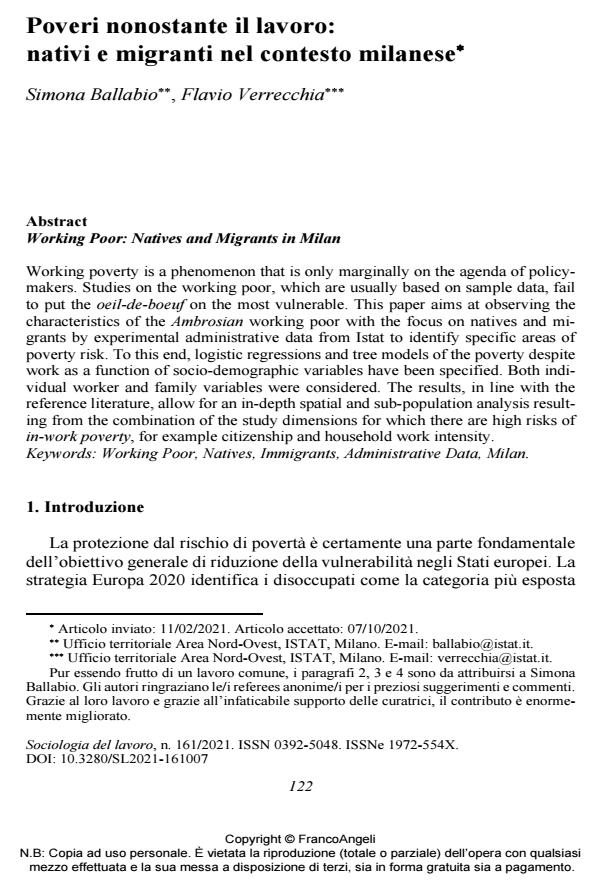Working Poor: Natives and Migrants in Milan
Journal title SOCIOLOGIA DEL LAVORO
Author/s Simona Ballabio, Flavio Verrecchia
Publishing Year 2021 Issue 2021/161
Language Italian Pages 26 P. 122-147 File size 309 KB
DOI 10.3280/SL2021-161007
DOI is like a bar code for intellectual property: to have more infomation
click here
Below, you can see the article first page
If you want to buy this article in PDF format, you can do it, following the instructions to buy download credits

FrancoAngeli is member of Publishers International Linking Association, Inc (PILA), a not-for-profit association which run the CrossRef service enabling links to and from online scholarly content.
Working poverty is a phenomenon that is only marginally on the agenda of policy-makers. Studies on the working poor, which are usually based on sample data, fail to put the oeil-de-boeuf on the most vulnerable. This paper aims at observing the characteristics of the Ambrosian working poor with the focus on natives and migrants by experimental administrative data from Istat to identify specific areas of poverty risk. To this end, logistic regressions and tree models of the poverty despite work as a function of socio-demographic variables have been specified. Both individual worker and family variables were considered. The results, in line with the reference literature, allow for an in-depth spatial and sub-population analysis resulting from the combination of the study dimensions for which there are high risks of in-work poverty, for example citizenship and household work intensity.
Keywords: Working Poor, Natives, Immigrants, Administrative Data, Milan.
Simona Ballabio, Flavio Verrecchia, Poveri nonostante il lavoro: nativi e migranti nel contesto milanese in "SOCIOLOGIA DEL LAVORO " 161/2021, pp 122-147, DOI: 10.3280/SL2021-161007